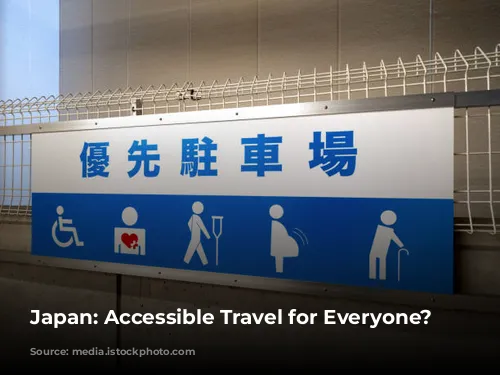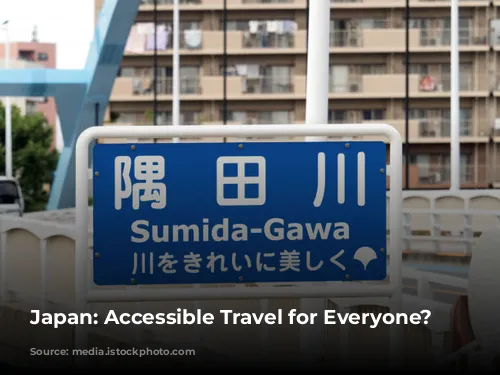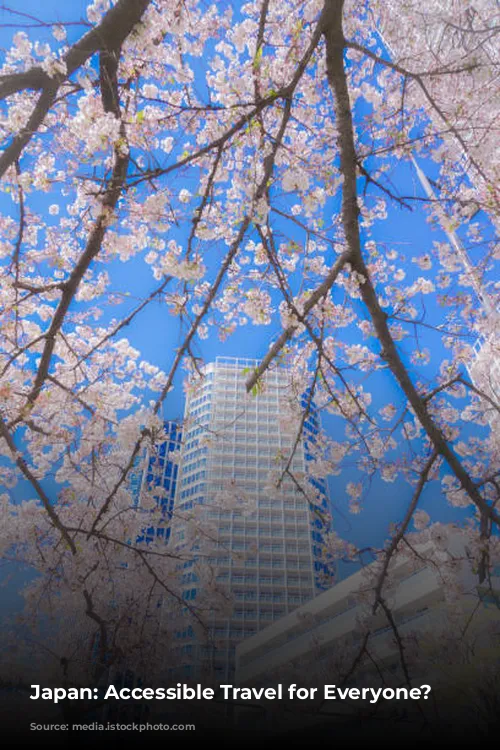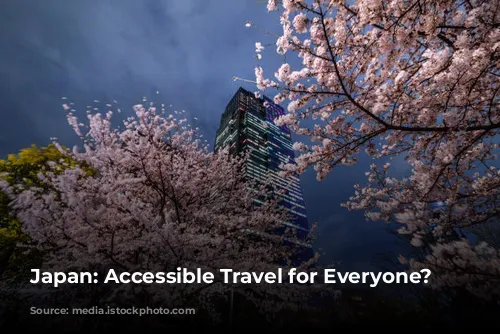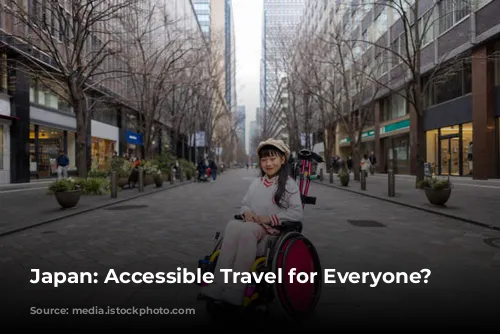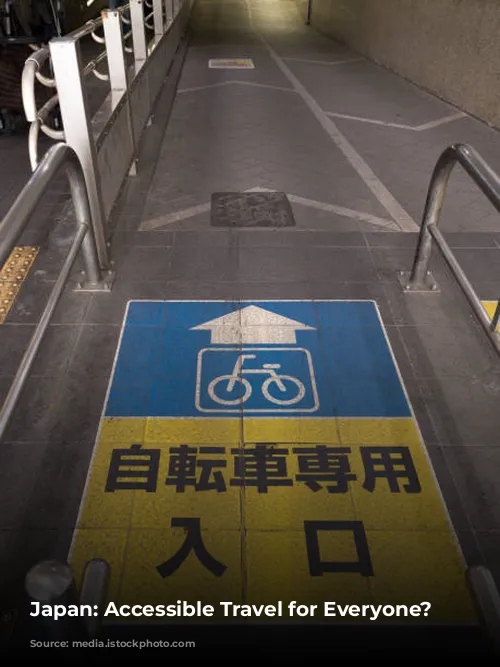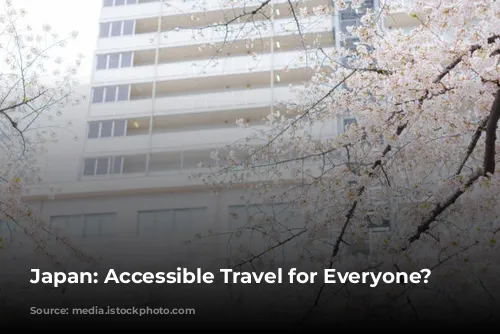Navigating Japan’s public transportation system can be a breeze, even for those with disabilities. Anthony and Josh, our travel experts, are on a mission to explore the ins and outs of getting around Japan with ease. They’ve got some great insights to share, so strap in and let’s dive into the world of accessible travel in the Land of the Rising Sun.
This section focuses on the accessibility of public transportation in Japan.
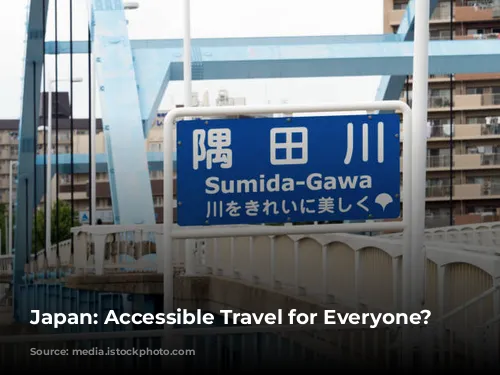
Commuter Trains: A Smooth Ride
Japan’s commuter trains are a marvel of efficiency and accessibility. Every train station that sees over 3,000 daily passengers is legally obligated to meet national accessibility standards. This might sound like a tall order, but in a nation so reliant on public transport, a whopping 90% of stations effortlessly meet these requirements.
Josh, our intrepid explorer, has experienced firsthand the seamless accessibility of Japanese train stations. Ticketing machines are conveniently positioned, and those with mobility limitations can easily seek assistance from friendly station attendants. Once you’ve secured your ticket, head to the designated lane and let the station attendant know your destination. They’ll not only escort you to the train and provide a ramp, but they’ll also radio ahead to your disembarkation station. A welcoming committee of station attendants will be waiting with ramps to ensure a smooth transition onto and off the train. It’s like a personalized red-carpet treatment for wheelchair users and those with visual impairments.
While this level of assistance is truly impressive, a language barrier could be a potential hurdle. Both Anthony and Josh recommend memorizing your destination names and brushing up on basic Japanese phrases to enhance communication with staff.
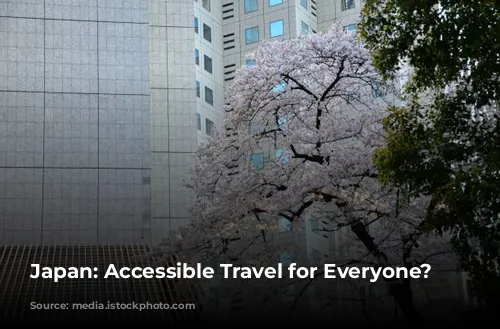
Shinkansen: Bullet Train Accessibility
While the Shinkansen, Japan’s iconic bullet train, boasts accessible seating, reserving these seats might require a little extra planning. While all Shinkansen trains are required to have accessible seating, these seats are not available for reservation on the online booking platforms.
This section focuses on the accessibility of Shinkansen trains.
Josh, along with Japan Railways, suggests contacting the ticketing office a few days in advance to secure your accessible seat. If you’re traveling between major hubs like Tokyo or Kyoto, snagging an accessible seat on the day of travel might be feasible. However, for smaller stations with fewer trains, calling ahead is highly recommended. Rest assured, your JR Rail Pass will still come in handy, just remember to plan your bullet train journeys with a bit more foresight.
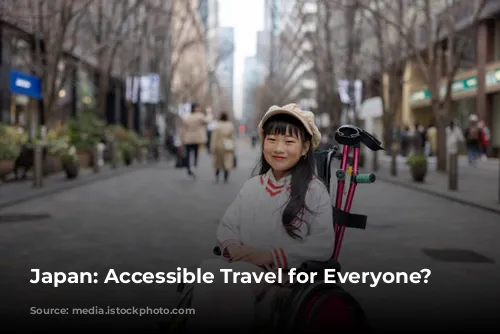
City Buses: Accessible and Convenient
Japan’s city buses are generally accessible, making getting around a breeze. Simply signal the driver that you need to board, and they’ll deploy a ramp at the middle door. The accessible seating area features special folding chairs, accommodating wheelchair users. Each bus is equipped with buttons on the poles or railings, allowing passengers to signal their stop. Upon disembarkation, the driver will provide further assistance.
This section focuses on the accessibility of city buses in Japan.
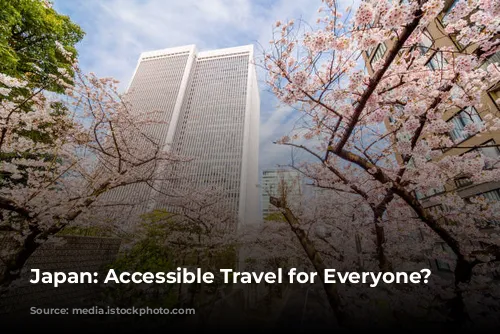
Highway and Airport Buses: A Mixed Bag
Highway and airport buses, however, present a different challenge. These buses, designed for luggage storage, tend to be higher off the ground, making access difficult for wheelchair users, especially those with non-foldable chairs. For powered wheelchair users, Josh advises against using these buses altogether, as negotiating the stairs might be impossible.
This section focuses on the accessibility of highway and airport buses in Japan.
While some airports in Tokyo offer wheelchair-specific vans and buses, it’s worth noting that these services cater primarily to local passengers and may present language barrier issues for international travelers.
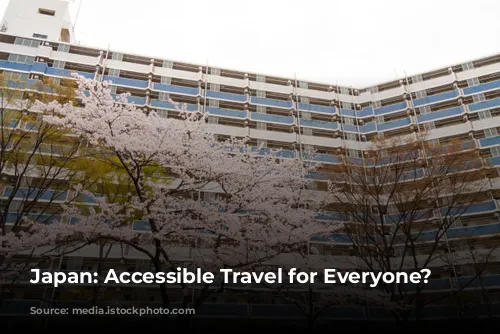
Taxis: Options and Considerations
Taxis are a popular mode of transport in Japan, but their accessibility can be a bit of a mixed bag. While Tokyo has been implementing wheelchair-accessible taxi services, such as Toyota’s JPN Taxi, travelers using a wheelchair might encounter challenges when utilizing these specialized taxis.
This section focuses on the accessibility of taxis in Japan.
Some drivers may express hesitation or lack of training when handling the special ramps, causing inconvenience for wheelchair users. If you’re planning to hail a taxi while in a wheelchair, it’s best to reserve one in advance through an app or online service. For those in major cities, Anthony recommends checking out Uber, which is gaining popularity in Japan and offers a convenient alternative.
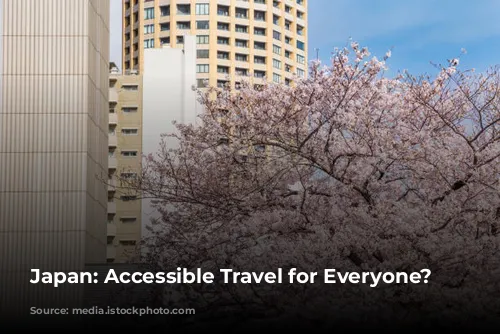
Japan’s Hotels: Accessibility Landscape
Traveling abroad often raises concerns about accommodation, and Japan’s hotel scene is no exception. Accessibility in Japanese hotels is an area that still needs improvement.
This section focuses on the accessibility of hotels in Japan.
Compared to hotels in other countries, Japanese hotels tend to be smaller and more compact. The government has only recently mandated that hotels with over 50 rooms provide at least one accessible room. This, however, is a minimal requirement, and many hotels seem to aim for the bare minimum when it comes to accessibility. Josh highlights a concerning statistic: only 0.4% of hotel rooms in Japan are wheelchair accessible.
While some rooms claiming accessibility might have a step up to the bathroom or be too cramped for wheelchair users, the good news is that Airbnb offers a wider variety of accessible options for travelers with disabilities. Airbnb, geared towards tourists, provides a range of filters to search for accessible rooms and homes. This alternative might be a better bet for finding comfortable and accessible accommodation.
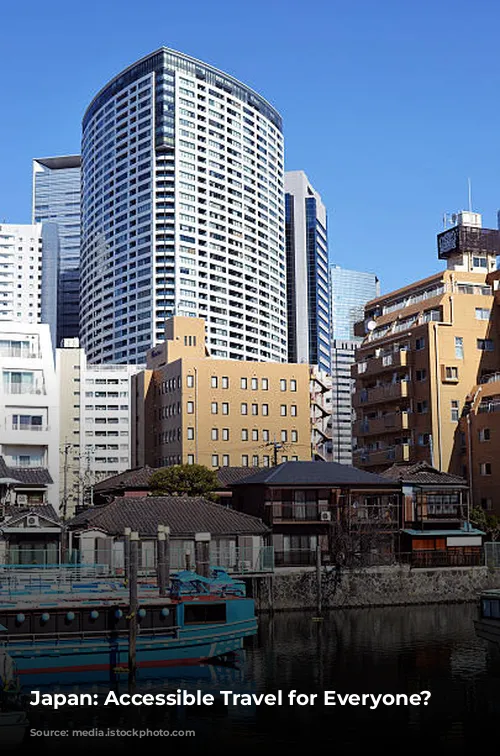
Tourist Attractions: Exploring Japan’s Landmarks
When it comes to tourist attractions, Josh categorizes them into two main types: one-site attractions and area attractions.
This section focuses on the accessibility of tourist attractions in Japan.
One-site attractions, such as Senso-ji Temple, concentrate the main attraction within a single location. Senso-ji itself is a shining example of accessibility, with steps near the gate leveled to create a flat surface and an elevator near the side entrance for wheelchair users. Josh notes that most temples and shrines strive to be accessible, even those not categorized as major tourist attractions. This trend is likely due to Japan’s aging population, with elders valuing religious and traditional activities at these sacred sites.
Area attractions, encompassing a larger area or town like Akihabara, pose a more complex accessibility challenge. While these are popular attractions, they are also public spaces spread over a considerable area, often owned by various entities. Consistent accessibility across these areas isn’t guaranteed, and the sheer number of people can add to the challenge. While an area attraction is still worth exploring, it’s wise to research accessible restaurants, shops, and amenities within the area before your visit.
Josh also mentions that cultural heritage sites may lag behind in accessibility. This is less due to crowd density or size and more due to the potential risk of damaging the structure or jeopardizing heritage status by altering the infrastructure. For detailed information on accessible attractions, check out Accessible Japan’s attraction page.
